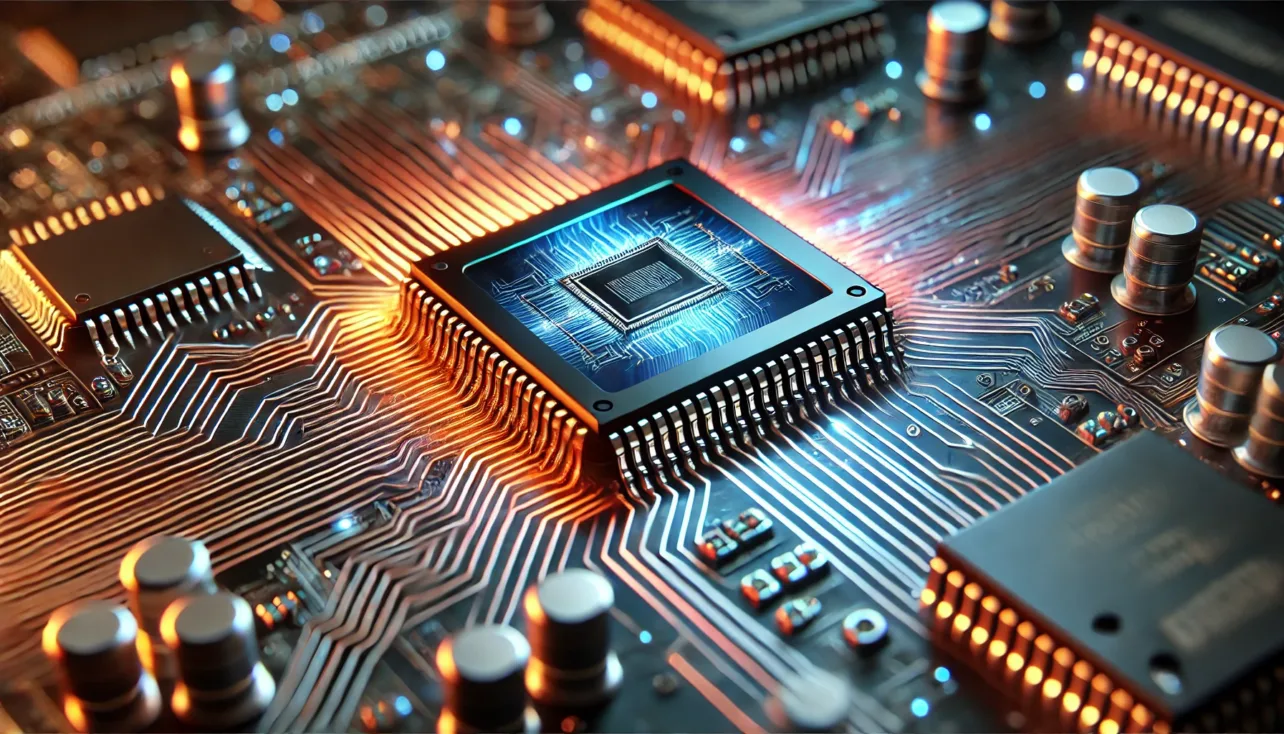Quick Answer:
A microcontroller is a chip with fixed hardware designed to run software instructions sequentially. In contrast, an FPGA (Field-Programmable Gate Array) is a reconfigurable chip that allows you to program the hardware itself to perform multiple operations in parallel. Therefore, both of them must be different in terms of architecture, performance, usability and cost.
In fact, what makes FPGA unique is its ability to be reprogrammable on the hardware level, even after being manufactured. This feature is not achieved by other development units like microcontrollers and microprocessors.
FPGA VS Microcontroller: Architecture
If we take, for example, the difference between a microcontroller and a microprocessor, we may see that they are somewhat close to each other. But if we now take an FPGA and a microcontroller, you can notice they are clearly not even close.
Basically, microcontrollers’ architecture falls under the categories of Harvard and Von Neumann. These are fixed architectures where you can’t change the hardware aspect of them. They consist of a CPU (Central Processing Unit) and memory. The difference between these two architectures is the way their CPUs communicate with memory. Harvard architecture separates memory and buses for instructions and data, while Von Neumann architecture uses a single memory and bus system for both instructions and data.
On the other hand, an FPGA consists of a matrix of configurable logic blocks, also called CLBs, all connected using programmable interconnects. These interconnects handle both the communication between I/O blocks and the logic blocks, all using simple logic gates like AND, NOR, XOR, NOT, etc.

Programming/Development Approach
Intuitively speaking, the difference in architecture does mean that the programming approach is not going to be similar, which is true.
The main concept of programming for a microcontroller (same for a microprocessor) is to compile the written code into a binary language composed of 0s and 1s sequentially for the CPU to read and then use the “already defined” logic circuits on the CPU to execute the code. It is not the same case for an FPGA, since the code given to an FPGA changes the whole hardware circuit.
For the programming language used for both units, microcontrollers usually use C/C++ languages. You may find some MCUs using Python (Arduino Nano ESP32 is one of them where you integrate MicroPython into it), while FPGAs use something called HDL (Hardware Description Language); popular choices are either Verilog HDL or VHDL.
We can notice the difference between C/C++ and VHDL just by looking at the previous architectures. Other than just the syntax, if we take a closer look at the execution model, the way the code runs on a microcontroller is sequential, meaning the instructions run line by line. In contrast, if we look at any FPGA, the code runs in parallel (thanks to our logic blocks), so it runs in a concurrent way.
Note: You may think an RTOS can make the MCU equivalent to the FPGA when we talk about parallelism, which is partly correct. RTOS or thread programming is actually an approach to parallel programming, since there is some latency between each thread. You can test this by making two threads, putting a while loop, and then placing a print function inside that loop. You will notice that there is always one code prioritized over the other, which is not the same as what an FPGA can do.
Use Cases of FPGAs and Microcontrollers
The architectural and programming differences between FPGAs and microcontrollers naturally lead to distinct optimal use cases.
FPGAs excel in applications requiring intense parallel processing and high-speed data manipulation. One example is video processing, where multiple pixels need to be processed simultaneously, or high-frequency trading systems where nanosecond-level timing is crucial. GreatScott!, a popular YouTube channel, made a video about driving a VGA display using TinyFPGA.
Microcontrollers, on the other hand, are perfect for beginner-friendly projects; even a 5th grader can start making a blinking LED project using an Arduino Uno (which contains an ATmega328P MCU). Of course, you can use microcontrollers for more complex projects. One of them I worked on was making a delivery robot that has to balance its load so it does not fall, using an MPU6050 gyroscope and a Kalman filter control system. Other advanced projects can be:
- Solar charge controllers.
- DIY Arduino battery management system.
- DIY drones.
Performance and Cost Considerations
The performance comparison between these units isn’t straightforward—it’s not about which is “better” but rather which is more suitable for specific tasks.
In terms of raw processing speed, FPGAs can, without a doubt, outperform microcontrollers when handling parallel operations. For instance, an FPGA can process data from multiple sensors simultaneously, while a microcontroller would need to handle them sequentially. However, this comes at a cost—FPGAs typically consume more power than microcontrollers and are also much pricier compared to most microcontrollers.
A basic microcontroller might cost a few dollars, while an entry-level FPGA could cost from tens to hundreds of dollars. This price difference extends beyond the hardware—development tools for FPGAs often come with significant licensing fees, while many microcontroller development environments are free. Arduino, being the most popular, allows you to just install the Arduino IDE, and you’re ready to go.
The development time and expertise required also factor into the total cost. FPGA development typically requires more specialized knowledge and longer development cycles, translating to higher labor costs. Microcontroller development, using familiar languages like C/C++, usually has a shorter learning curve and faster time-to-market.
Note: For high-volume production, these cost considerations might shift. When producing millions of units, creating a custom ASIC (Application-Specific Integrated Circuit) based on an FPGA design might become more cost-effective than using either an FPGA or a microcontroller.


1 comment